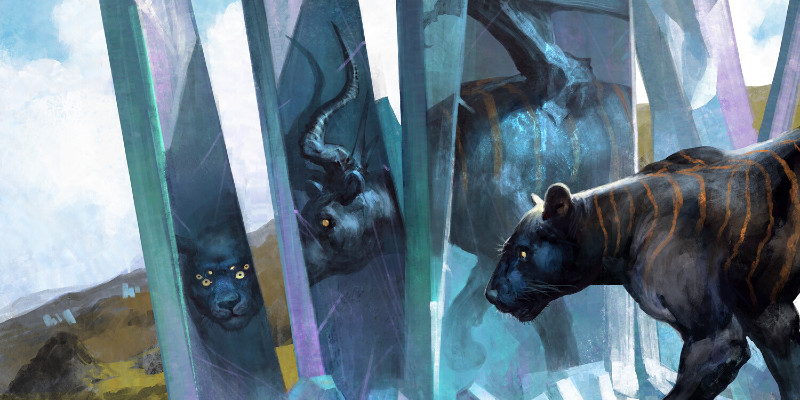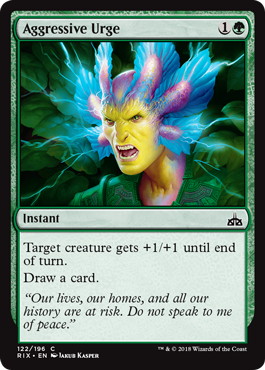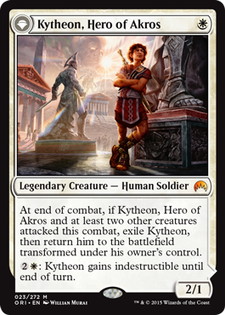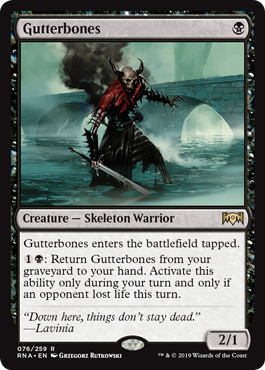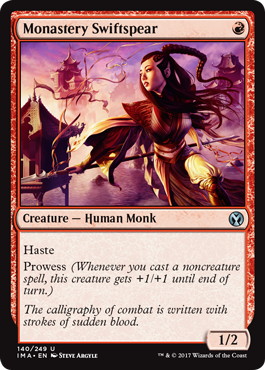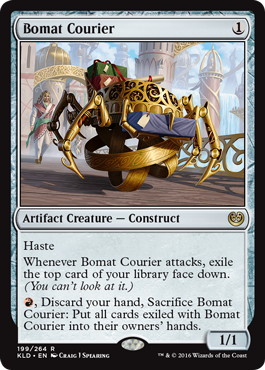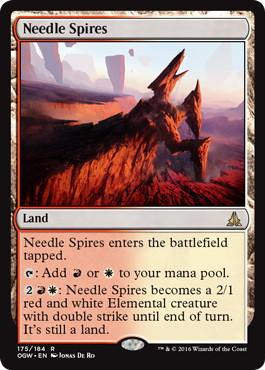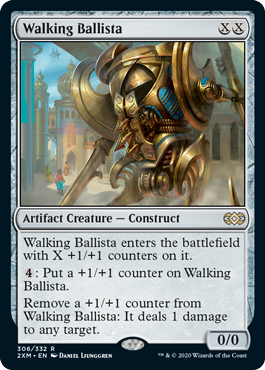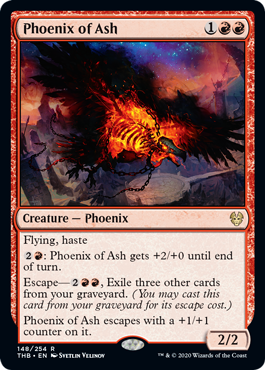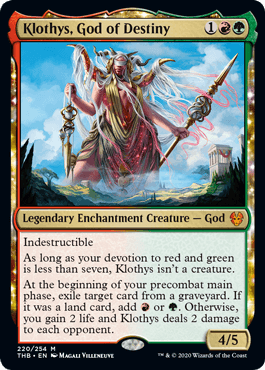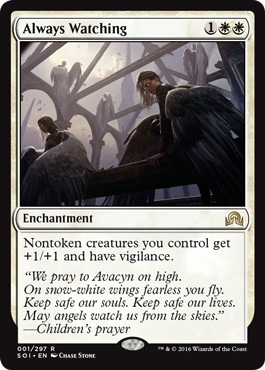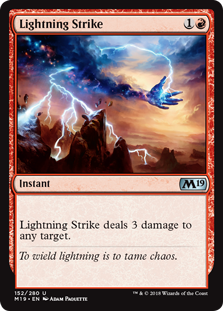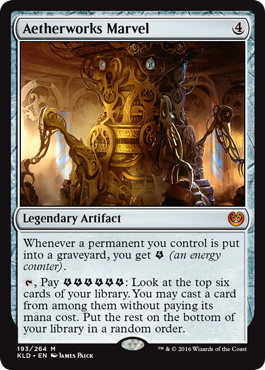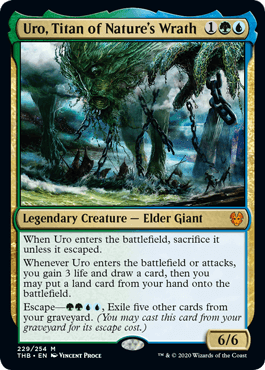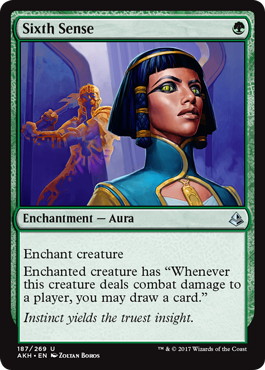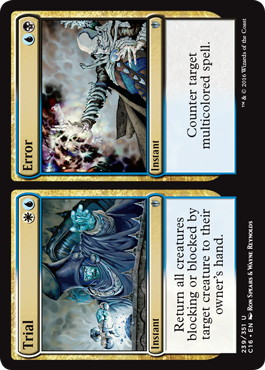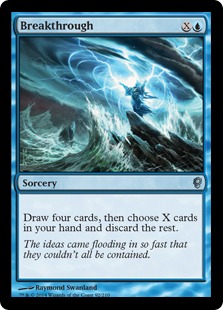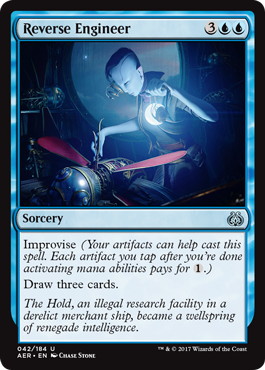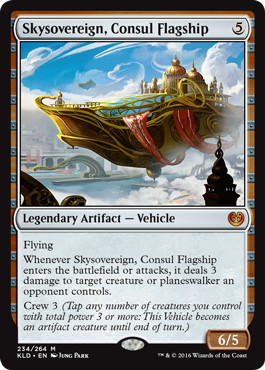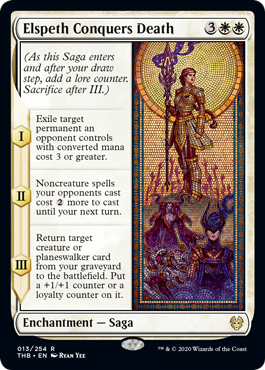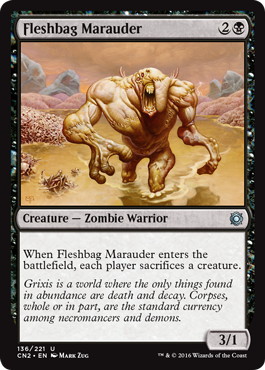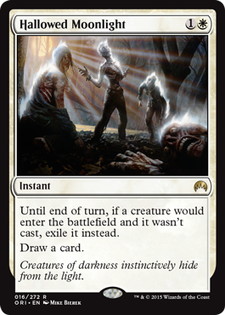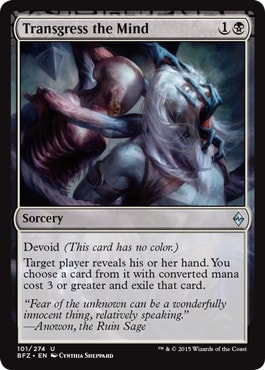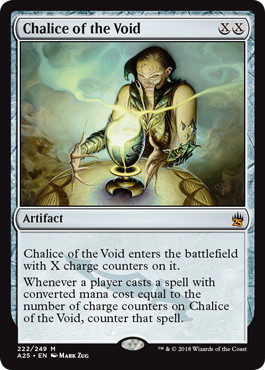Introduction
Deck selection is now the single most important skill in being successful at high-level magic. There is too much information being spread too rapidly to allow a player to have an edge solely through innovative deck building, while Limited has been sadly removed from most tournaments.
It’s impossible to write a comprehensive about the process of deck selection. Magic is constantly changing, and what was important in selecting a deck in the Modern Format in June 2016 is going to be different from what was important in choosing a Standard deck in November 2019.
However, I noticed some patterns that have been true more often than not in the context of Standard, and I will emphasize what has worked better in the era of F.I.R.E. design and how you can use playtesting to improve your deck selection process.
But they are not absolute truths, just a framework that I try to keep in mind when choosing my own decks. Hopefully, this article will allow the readers to expand their tools in evaluating their decisions.
Early in a Format – The Importance of Raw Power and Presenting Threats
An old rule of thumb is that decks with a proactive strategy are the strongest early in the life of a format. It is explained this way: a reactive deck needs an established metagame to know exactly what it is reacting against, while a proactive deck is just posing questions that no one had time to figure out the exact answers.
For the longest time, this meant playing an ultra-aggressive deck in the first few weeks of a format. Even though you can have proactive decks based around engines or late-game cards, those are often harder to tune without the benefit of sufficient practice, and often the aggressive creature decks will prey on them early in the format as players will try to explore the cool new cards available to them.
Lots can be said about building a great aggressive deck, and I am not a great builder myself (follow Frank Karsten for better knowledge in the subject), but here are some general guidelines I noticed of when an aggressive creature can be good:
12 or More Creatures That Cost One Mana
While it is possible to have an aggro deck with 8 or fewer creatures that cost one mana, you ideally want that number to be closer to 14 so you have a 90%+ chance to have it in your starting hand.
This is such a powerful concept that if a deck can play that critical amount of early drops, it is very likely that it will remain good well beyond the first weeks of the format.
Not all creatures are created equal, and you should not force your deck to play the less powerful ones just for the sake of a mana curve. Generally, if a creature can attack for 2 damage and it costs 1 mana, it will be a great option.
Mana Flood Protection
This is not a critical component, but it can take an aggressive deck to the next level. Ways to mitigate mana flood include playing lands that add value beyond just mana (such as creature lands like 《Needle Spires》, or utility lands like 《Castle Embereth》, or Zendikar Rising’s double faces cards), so you have an option to use excess mana later in the game.
Another clever way to mitigate flood is also to play a curve that is so low that you can afford to just play fewer lands in total, a tactic that has become more powerful with London Mulligan or in Arena’s Best-of-One format. Yet another option is to include spells that let you spend as much mana as you want later in the game, such as 《Walking Ballista》, or Escape cards.
An Alternative Path of Attack
While your deck will be centered around creatures, it is still useful to have different threats to play around with different types of removal. The easiest way to achieve this is through Planeswalkers, but really anything that dodges creature removal while allowing you to increase board pressure will do, such as 《Embercleave》 or enchantments like 《Klothys, God of Destiny》 or 《Always Watching》.
4 to 8 Interactive Cards
Early in the format, it’s hard to gauge how much you should care about what your opponent is doing (and the point of playing a proactive deck is to dodge this question as much as possible), but I noticed that historically it has paid off to play something between 4 to 8 interactive cards that let you remove blockers against other creature decks.
Red decks have it easy and can probably go higher in those numbers as their interactive cards will often double as direct damage spells, but for other color combinations, I never regretted having around 6 interactive spells.
This is a great example of an aggro deck that was successful early in the format and retained its punch for a long time:
- Tom Ross
- – Mono White Humans
- (Standard)
-Land (18)- 4 《Dragon Hunter》
4 《Expedition Envoy》
4 《Thraben Inspector》
4 《Town Gossipmonger》
3 《Anointer of Champions》
3 《Kytheon, Hero of Akros》
4 《Knight of the White Orchid》
4 《Thalia’s Lieutenant》
2 《Consul’s Lieutenant》
-Creature (32)-
Notice the abundance of one-mana creatures, the low land count, the usage of 《Always Watching》 to add power to the board while dodging creature removal, and exactly 6 ways to remove blockers in 《Gryff’s Boon》 and 《Declaration in Stone》.
Remember how I said that aggressive creature decks would prey early in the format on engine or midrange decks based around new cards? Well, this hasn’t been completely accurate lately. Given the changes in design philosophy since 2018, if a deck builder had a gut feeling that a new card was broken and tried to build a deck to abuse it, they’d likely be right.
Remember 《Aetherworks Marvel》? 《Nexus of Fate》, 《Teferi, Time Raveler》, 《Oko, Thief of Crowns》, 《Wilderness Reclamation》, 《Fires of Invention》, 《Field of the Dead》, 《Uro, Titan of Nature’s Wrath》, 《Cauldron Familiar》 plus 《Witch’s Oven》, 《Lucky Clover》, and 《Omnath, Locus of Creation》? So on and so on. All of those were of such a high power level that they could outclass aggressive creature strategies (and everything else) even if the other 56 cards of the deck were not fully optimized.
This is a good example of this second approach:
- Lucas Esper Berthoud
- – Simic Food
- (Standard)
4 《Island》
4 《Breeding Pool》
4 《Temple of Mystery》
1 《Castle Garenbrig》
-Land (25)- 4 《Gilded Goose》
4 《Leafkin Druid》
4 《Paradise Druid》
3 《Hydroid Krasis》
2 《Voracious Hydra》
1 《Yorvo, Lord of Garenbrig》
4 《Questing Beast》
4 《Wicked Wolf》
-Creature (26)-
I remember the first time in playtesting when someone cast 《Oko, Thief of Crowns》 against me and I realized I had no chance of winning that game. Since 《Oko, Thief of Crowns》 is related to food and creating creatures, I threw around food and creature cards that looked the strongest at every spot of the curve, and the decklist above was incredible despite being rough around the edges.
Later in the format, 《Oko, Thief of Crowns》 decks became more sophisticated, incorporating a third color and more interaction. It also worked in control decks, not just in food + creature decks. But for the first weeks of a format, I was just happy for having identified the set’s most busted card and playing proactive elements around it. It didn’t have to be a perfect Oko deck, just a functional one.
《Oko, Thief of Crowns》 maybe is not the greatest example since it was an obviously broken card, but there have been lots of other cards that looked strong, but no one could be sure they would be ban-worthy without a few weeks of results. Those players that trusted their instincts and ran away with building decks around those cards got rewarded.
I don’t know if 2021 will still have such incredibly powerful cards in new sets, but I would insist on this approach until proven wrong.
Late in the Format – The Importance of Playtesting
After a few weeks of results, the way to approach a format becomes completely different. There will be tons of different information sources available (Streams, Articles, Twitter, Discord) and your job is to process such information, with two goals in mind: i) try to filter what is true and what is misleading, and ii) figure out how to use this information get one step ahead.
This is where playtesting comes in.
Playtesting to Learn the Truth (Focus on Matchups)
The first goal of playtesting is often to figure out which deck is favored in a matchup (although it can be more than that).
My main playtesting technique involves finding a partner that I trust and take meaningful notes during our games. When that is not possible, I try to watch games through streams, focusing more on possible play patterns than on the actual results.
The thought process behind playtesting (or watching others playtest) is this: in any matchup between two decks, there will be a range of hands and game sequences that each deck can achieve. The goal is to identify how those ranges mash together and who will come on top more often. You take notes and talk to your playtest partners to do that more efficiently and accurately.
A common myth is that it is bad to take notes of results in the form of win rates. While tracking win rates of a few dozen games will not tell the whole truth, it still helps. It is a good starting point, and sometimes it is the best tiebreaker when you cannot explain otherwise who is favored in a matchup.
You just need to be fully aware of their limitations. A single individual or team tracking their win rates will not produce anything statistically relevant. Even if you play a lot of online games for more date, the truth is that the quality and focus of opposition to online games is not always ideal. As my teammate, Gonçalo Pinto says, “Arena and Leagues can tell what beats your deck, but not what your deck actually beats”.
Learning What Matters and Trusting Your Gut
But if you cannot trust a few dozen games, and you can’t fully trust your online win rate, then how do you get reliable information? Well, you do your best to learn what matters in a matchup and go from there.
It is hard to describe how to get a better “feel” for a matchup in just a few games, but the big thing I look at is how hard it is to win, or how unlucky I would need to get to lose.
For instance, if during the games I am feeling scared at every turn that my opponent can make one of several possible plays that will put me behind, that is not a great sign. The actual knowledge here does not lie in the results of the games, but in what goes through your mind as you are trying to win the game. That is the “feels easy or feels hard” part, in other words.
Learning the Play Patterns
When trying to figure out what matters in a matchup, I tend to see two sides arguing their cases before a judge. You try to identify all their arguments and then you weigh them.
The notes I take during playtesting try to reflect this impending trial. It is basically a bunch of notes of possible play patterns. Doing this has three advantages: i) it’s easier to communicate and share them in a team setting; ii) helps me figure out a “matchup narrative” – I am trying to understand what happens in games where deck A beats deck B and vice-versa, and after I have that figured out I can think more deeply on how likely each scenario will come up, and iii) the notes also help me to look back in the games and try to brainstorm possible solutions from either side.
Focusing on play patterns that lead to a side winning is really important as that is the easiest way to identify mistakes or come up with innovations (we will come back to this later).
A Simple Process
A simplified step-by-step process for learning what matters would be as follows:
– Before playing games, imagine the possible matchup narratives.
A matchup narrative is the list of different ways the games can play out or trying to imagine how all the games that deck A beats deck B, and vice versa. This is the first step in figuring out the range of hands and play sequences I described earlier.
You also make a note of blowout or particularly relevant play patterns that would put a deck ahead.
– Iterate on the matchup narratives by playing or watching more games.
At this stage, you are trying to figure out if there are more play patterns or winning sequences you didn’t notice before.
Here, I like to write brief notes on how the games played out. They shouldn’t be more than 10-word sentences for every game. It takes just a few seconds.
I am a big fan of watching stream VODs on 2x speed and making such notes. Great way to get information.
– After you figure out all the possible narratives, try to estimate how often they can play out for every side.
– Based on your gained knowledge, try to figure out how each deck can improve in the matchup.
That is the gist of it. Social media will always be flooded with information, but you playtest to watch for play patterns, take notes, and learn your own truth about what works and what doesn’t in the context of different matchups.
And then you break the metagame.
Playtesting to Break a Metagame (Focus on the Big Picture)
After you filter the quality of information available to you by playtesting, you will find yourself with a good idea of how all the common matchups play out. This can be translated into a list of statements (that you put a high probability to be true) when describing the forces that drive a metagame. I will call them Metagame Statements.
I always try to write them down. For example, a list that encompassed this current Standard would be something like this:
Although you believe all of those metagame statements to be true, your goal is still to try to break them. Look at the list above and imagine if you could reverse a single sentence but you were the only one to know about it.
Say, if instead of Gruul losing to Mono Green, you knew it would beat it instead (for example, by finding the perfect removal spell in 《Soul Sear》) – if everyone else was operating under the outdated list of metagame statements, you could show up with Gruul and mop up a tournament where Mono Green was the most popular deck.
The purpose of writing down the metagame statements is precisely so you can identify where is the highest payoff point in breaking them. Of course, this is easier said than done and not all problems are solvable. But the point is you do not need to come up with a completely new archetype to break a metagame, you just need to do enough to reverse a bad matchup or two.
Achieving this is an incredible advantage against the field and I noticed that experienced players would gravitate their deck choice to explore this angle. This, for me, is the secret of deck selection in modern times. Always be aware if you can reverse a metagame statement, and if you do, seriously consider selecting your deck around this.
Reversing a metagame statement can be done many different ways and there is no easy or simple way to do it. To give a few examples, so you can be on the lookout for similar situations:
Adding Another Angle of Attack
Before Pro Tour Aether Revolt, many teams had Mardu Vehicles as an underdog to BG removal heavy decks. However, 《Skysovereign, Consul Flagship》 coming out of the sideboard was a great piece of innovation as it dodged most of BG removal spells (《Fatal Push》 and 《Walking Ballista》), making Mardu Vehicles favored after sideboard. This was such a powerful reverse of a metagame statement that by itself it convinced many on our team to play Mardu.
Recently, in the Historic format, it was believed that Goblins was favored against Mono Black 《God-Pharaoh’s Gift》 decks because of access to graveyard or artifact removal. However, the team of PV, Mike Sigrist and others teams figured out a plan that made Mono Black less dependent on Gifts, and this was enough to make them plan Mono Black.
Coming up With Entirely Different Sideboard Plans
- Samuel Vuillot
- – Mardu Vehicles
- Grand Prix Utrecht 2017
- (1st)
2 《Swamp》
2 《Mountain》
4 《Concealed Courtyard》
4 《Inspiring Vantage》
4 《Aether Hub》
4 《Spire of Industry》
1 《Foreboding Ruins》
1 《Needle Spires》
-Land (24)- 4 《Walking Ballista》
4 《Thraben Inspector》
4 《Toolcraft Exemplar》
4 《Scrapheap Scrounger》
2 《Thalia, Heretic Cathar》
-Creature (18)-
4 《Unlicensed Disintegration》
4 《Heart of Kiran》
4 《Gideon, Ally of Zendikar》
2 《Chandra, Torch of Defiance》
-Spell (18)-
3 《Oath of Chandra》
3 《Oath of Liliana》
2 《Nahiri, the Harbinger》
2 《Ob Nixilis Reignited》
1 《Authority of the Consuls》
-Sideboard (15)-
Back to Mardu Vehicles (a sentence I’ll never get tired of saying), the week after Pro Tour Aether Revolt had a Grand Prix won by Samuel Vuillot whose sideboard plans involving going up to 10 Planeswalkers and taking out creatures to bring in several removal spells. While everyone was expecting to beat on Mardu by bringing extra removal or creating a board presence with creatures, this plan completely reversed expectations.”
Figuring out new play patterns
Sometimes you don’t need a new list, just better to play with the tools you already have. Recently, our team at some point believed that Selesnya Yorion was favored against Gruul. This was because Selesnya was good at dealing with Gruul’s threats one-by-one, which in turn meant Gruul could never get a fast 《Embercleave》 or 《The Great Henge》 going.
What it took to reverse the matchup was to realize that Gruul needed to keep hands that allowed it to double spell early in the game, as this would translate into additional chip damage(you can see commentators figured out this on the fly during my match).
Recycling old decks
You can only pull this off if you keep notes for a long time. This example is about Esper Dragons versus 《Rally the Ancestors》 in late 2016. For context, at the time Rally was considered a favorite against Esper Dragons. In fact, Esper Dragons had sort of disappeared from the metagame at that point. A year earlier, however, Lukas Blohon won a Grand Prix with Esper Dragons by defeating three 《Rally the Ancestors》 decks in the top 8. And I had my notes from that period.
- Lukas Blohon
- – Esper Dragons
- Grand Prix Brusseles 2015
- (1st)
2 《Swamp》
4 《Sunken Hollow》
2 《Prairie Stream》
4 《Flooded Strand》
4 《Polluted Delta》
2 《Bloodstained Mire》
1 《Shambling Vent》
2 《Haven of the Spirit Dragon》
-Land (27)- 3 《Jace, Vryn’s Prodigy》
4 《Dragonlord Ojutai》
2 《Dragonlord Silumgar》
-Creature (9)-
1 《Clash of Wills》
4 《Silumgar’s Scorn》
2 《Ultimate Price》
3 《Foul-Tongue Invocation》
2 《Scatter to the Winds》
1 《Complete Disregard》
2 《Utter End》
1 《Ojutai’s Command》
1 《Crux of Fate》
1 《Murderous Cut》
4 《Dig Through Time》
-Spell (24)-
2 《Tasigur, the Golden Fang》
2 《Negate》
2 《Dragonlord’s Prerogative》
1 《Duress》
1 《Horribly Awry》
1 《Surge of Righteousness》
1 《Ultimate Price》
1 《Infinite Obliteration》
1 《Virulent Plague》
-Sideboard (15)-
Re-reading them, two things that stood out was that Blohon’s version was particularly counterspell heavy, so he had multiple counterspells ready when Rally tried to bait spells at end of the turn in the late game. Another one was that 《Dragonlord Ojutai》 sticking in the board was often “gg”.
After that GP, Esper Dragons list started to trim counterspells, so Rally got really good at baiting action at the end of turn. Also, Rally added 《Fleshbag Marauder》 as a clean answer to 《Dragonlord Ojutai》 before it can get a hit. Naturally, the matchup flipped.
However, those factors were not true anymore by the time of my RPTQ. The 《Fleshbag Marauder》 were gone from their list, in favor of 《Reflector Mage》. And while counterspells weren’t necessarily well positioned again, I brainstormed that Esper could have access to additional instant speed interaction maindeck in 《Hallowed Moonlight》.
A different set of playtest notes said that Grixis Control decks had laid out a reasonable sideboard blueprint to improve against Rally in 《Transgress the Mind》 + 《Kalitas, Traitor of Ghet》, something that Esper could incorporate.
Based on that knowledge, collected in .txt files over the course of months, I came up with a plan. Some playtest games revealed it made sense and let me realize that 《Hallowed Moonlight》 was even more relevant than I thought because of 《Dig Through Time》 to fetch them in long games, and most games went really long. I could not playtest too much, but the games felt good. At the RPTQ, me and two friends qualified with that list, beating a fair share of Rally along the way, so it all worked out.
Notice metagame shifts in sideboard cards
it’s easy to notice when a deck disappears from the metagame (and evaluate the impact it has), but it can be harder to pay attention to subtle changes in sideboard cards. Do not miss them!
During a Modern PTQ season, several decks that used to play 《Grafdigger’s Cage》 in their sideboard started playing 《Leyline of the Void》 or 《Tormod’s Crypt》 instead, as Dredge was on the rise and demanded more linear and powerful answers. When I realized that, it made possible to play 《Collected Company》 with the Melira combo again, as my Companies were more likely to be good after sideboard and I could just focusing on attacking for damage against the narrow graveyard hate.
Deck Selection When You Don’t Break the Metagame
Worst case scenario, you could not reverse a metagame statement and are now stuck along with everyone else in picking a deck amongst the same choice that everyone has. This is still fine.
In scenarios like this, it is OK to gravitate to a play style that you enjoy the most, as it is more likely you will play it to perfection.
A very clever approach is the Austin Bursavich rule: pay attention to the deck that seems to have more success, add a land, and focus on getting an advantage to the inevitable mirror matches.
Conclusion
I do not have much to add at this point, but a final note is that you should be aware of your tournament is going to have open decklists or not. As I wrote previously, in scenarios with open decklists, decks that rely on single card plans, surprise factor, or consistently curving out can all be punished by an opponent’s careful mulliganing. Everything else equal, I would be more likely to play a control deck than an aggro deck in this scenario.
Lucas Esper Berthoud (Twitter)


